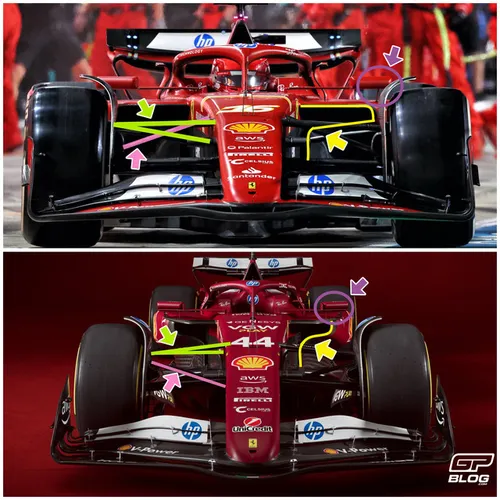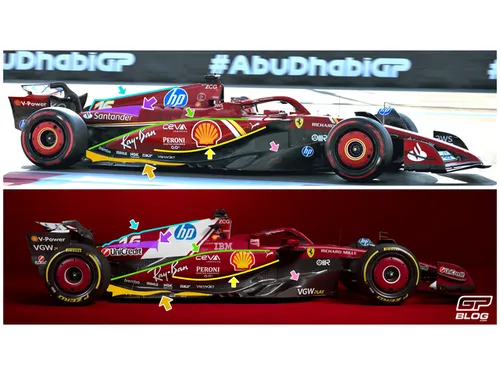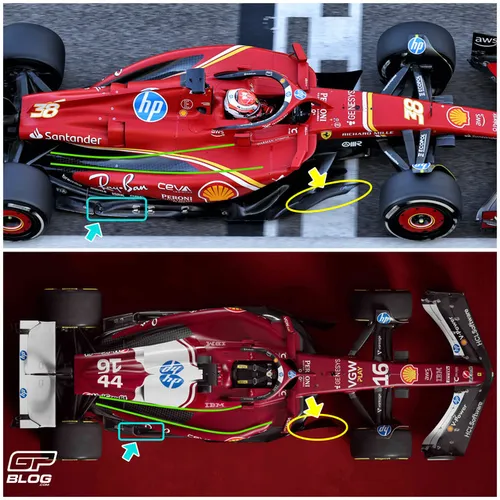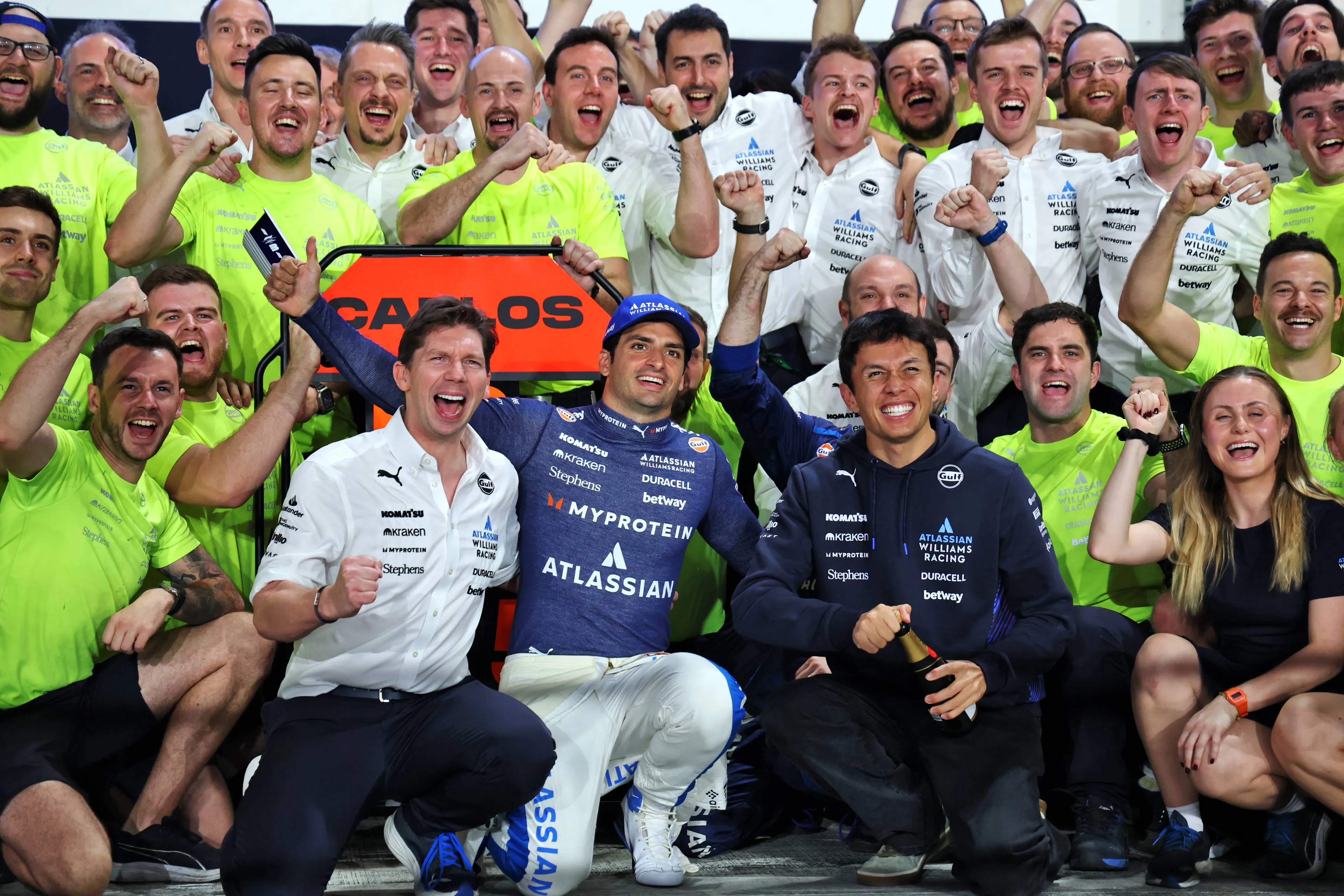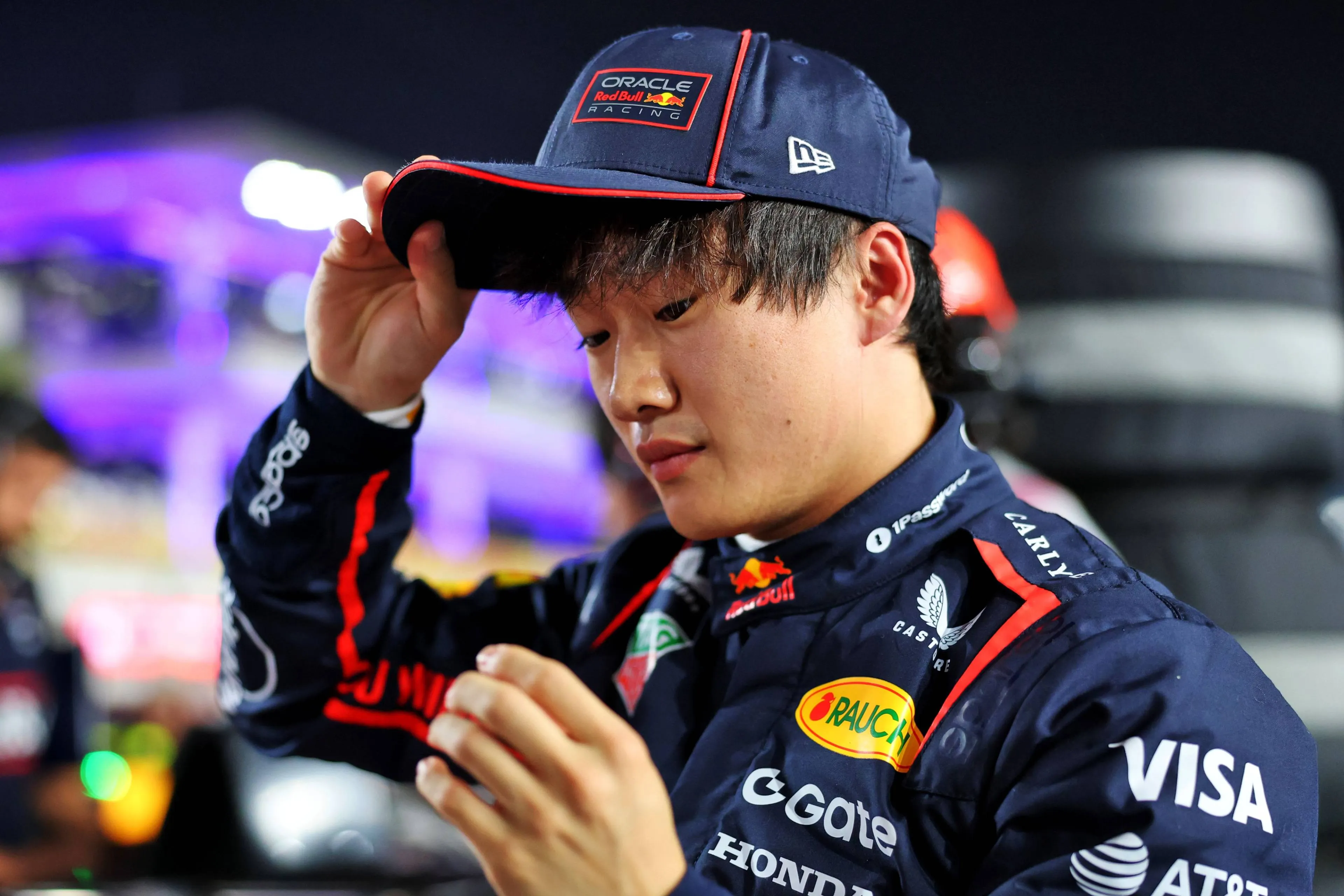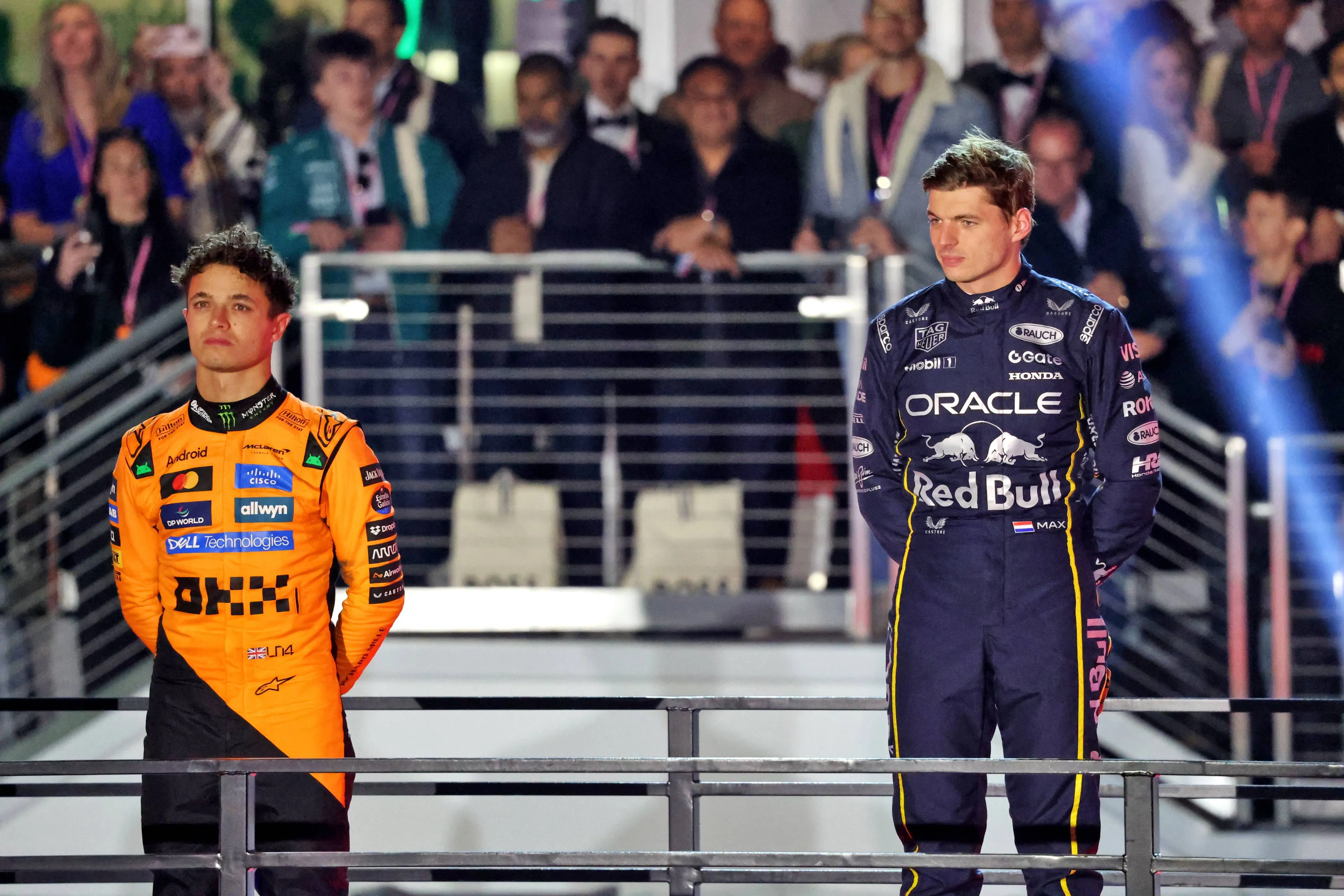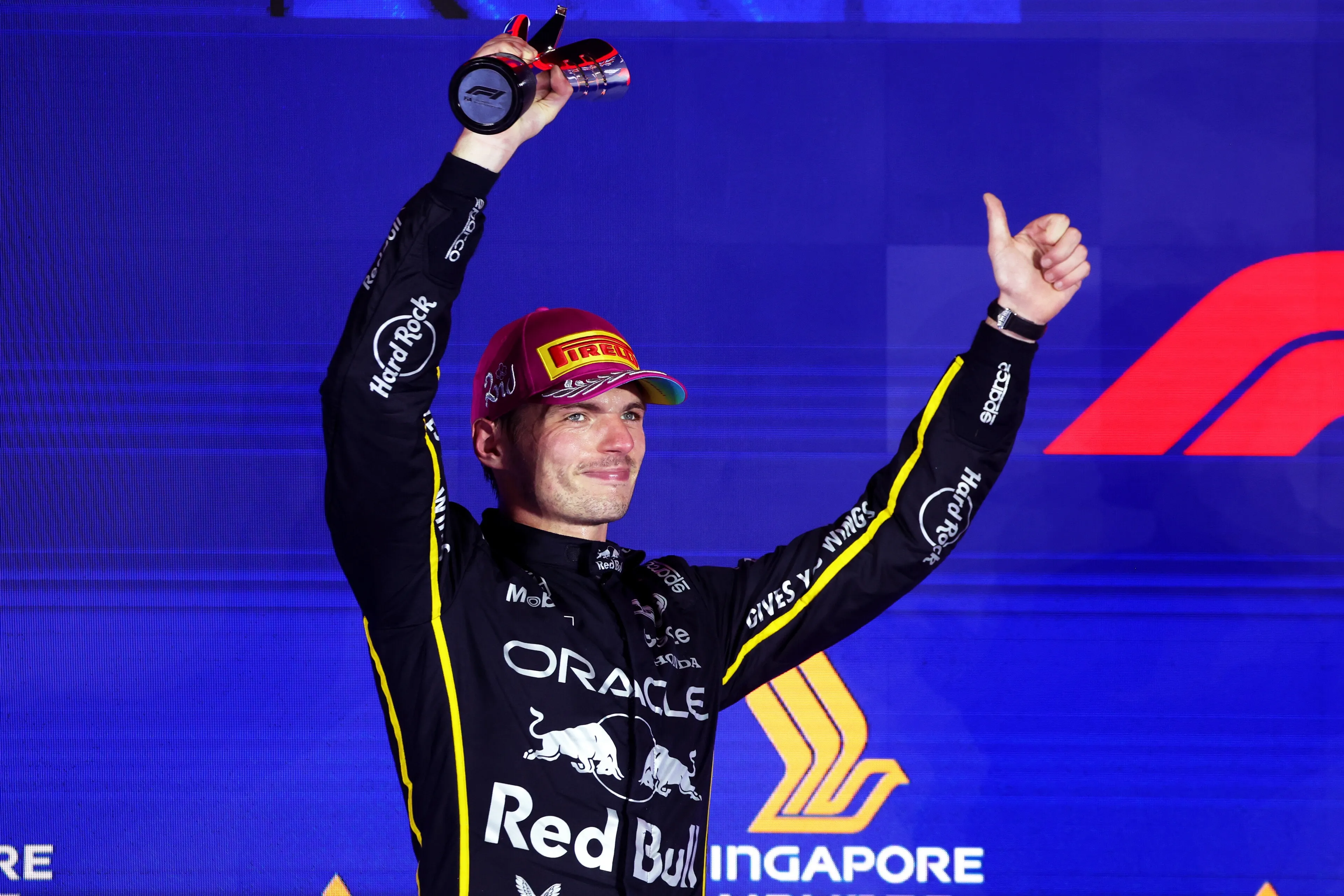Immediately after the F1-75 launch in London on Tuesday evening, Ferrari shared the pictures of the new SF-25 on their social media channels, just a few hours before Charles Leclerc and Lewis Hamilton drove the car on Ferrari’s home circuit in Fiorano for the 200 km filming day. There are some bold changes to their new car especially on the mechanical side, with a new pull-rod suspension on the front, while the aerodynamics have been evolved in line with the path started during last season.
The newly revealed SF-25 displayed some big changes in every different area.
A new pull-rod front suspension
Starting from the frontal view, it’s possible to appreciate some major changes to the suspension scheme on the front axle as well as the cooling inlet: for what concerns the front suspension, Ferrari have decided to switch from a push-rod system they had on the SF-24 to a pull-rod system on the SF-25 (pink arrow and line). This change's main aim is to lower the centre of gravity of the car, because with a pull-rod system, the dampers, springs and roll bars are located in the lower part of the chassis, meaning that there’s more mass closer to the ground (the lower the 'CoG' is, the better the performance). Moreover, this new system could guarantee a much stable platform at high speed, which caused many problems to the SF-24, especially in fast corners and in qualifying, when soft compounds were used.
Moving now onto the upper triangle (green lines and arrows), it’s possible to see some changes, as the front arm is anchored to the chassis in a higher point and the rear leg is way less inclined, mainly flat. This change drastically reduces the angle of anti-dive on the front suspension compared to 2024, when the height difference between the front arm and the rear leg was greater. This change in design could definitely have an impact on load transfer under braking (less anti-dive means more pitching when under breaking), but probably offers a big aerodynamic advantage as it frees up much more space between the two triangles, allowing the air to pass through and feed the bodywork of the car.
Having a look at the cooling inlet design (yellow arrow and line), it exaggerates the concept already introduced last year at Imola: it now has a “P-shape”, with a much more curvilinear profile than before. This provides a big high pressure area in the upper part just below the horizontal tray, moving air into the cooling system and to the PU components.
At the same time, this design matched with a very sculptured sidepod (which will be analysed later) allows to create a bigger undercut and feeds a channel directed towards the rear end of the car, producing more downforce.
Last but not least, the mirror support has also been profoundly revised: while on the SF-24 there was only a thin vertical element that connected the mirror to the sidepod, on the SF-25 it’s possible to see both a vertical and an horizontal element around the mirror that have the main function of reducing the losses caused by it, producing some vorticity and directing air towards the ‘waterslides’ behind. Moreover, the tray tip now shows a carbon winglet, which has the main function of keeping a high pressure area alive in this zone, in order to push the front tyre wake outside (purple circle and arrow).
A smaller sidepod and updated floor
Looking at the car from its side, there are a lot of big changes in all areas. Starting from the right, the pink arrow highlights a very different design in the floor edge wing: besides from having a different inclination throughout its length, mainly to keep the front tyre wake outside of the Venturis, it also shows a different connection to the main floor, with three small steps, that have the main purpose of producing vortices to cancel the negative effect of the turbulence coming from the front tyres.
In terms of the sidepod, it has a very different design than what we can see on last season’s car: the yellow line and arrow show how much larger the undercut actually is, while the green line and arrow towards the top show a different trend of the upper part, with the main diffence of pushing the air towards the beam wing and diffuser. The goal with this new sidepod is not only to improve efficiency (by reducing the surface exposed to air), but to especially increase the amount of air pushed towards the beam wing and diffuser, to increase the generated downforce.
For this reason, also the floor's 3D-shape around the floor edge has been profoundly evolved: while on the SF-24 the small channel that drew air from outside and pushed it into the diffuser, which was much longer and thin (orange arrow and line), it has now been divided into two separate and smaller channels: the one further ahead, is smaller and shorter, while the one on towards the back is way bigger and draws air from a more internal point, feeding the diffuser with cleaner air coming from the Venturi inlets.
Moving on to analyse the upper section of the car, the engine cover looks very different as well (purple area): despite the fact that bodywork curvature at the exit of the “louvres” was been kept, it’s now shorter and less deep, counterbalancing the low pressure of the hot air exiting with some high pressure, to keep the balance neutral.
The top light blue line and arrow point out a difference in the profile of the engine cover as well, which shows three bulbs at the tail-end to push hot air off. The previous version was much more squared and sharp, and extended for almost the entire length of the engine cover.
Bigger and sculpted 'waterslides'
Now taking the look at the images from above, it’s possible to see how the new floor edge wing - already discussed above (yellow circle and arrow) -, as well as the rear end of the floor edge (light blue square and arrow), which then leads to how the new floor draws air from a different place than before to feed the diffuser.
Last but not least, the two green lines delimitate the width of the sidepod waterslides, which are now longer and well more structured than on the SF-24, as they narrow as they get closer to the rear suspension, increasing the amount of air pushed towards the upper part of the diffuser.
All these changes mainly target to produce much more downforce and to manage the flow around the floor edge in a very different way, probably related also to how the floor works and at the different ride heights that will be used on different layouts.
Both Hamilton and Leclerc’s words have been particularly enthusiastic and positive towards this car, proof that the whole team have big expectations from this SF-25. Having had the opportunity to watch it closely on Wednesday in Fiorano, it’s clear that there's a lot of hope that this car may be the right one to bring Ferrari back to the top of F1, and help them win 'at least in one of the two championships' like Leclerc said, but only the first race in Australia will give us a clearer idea of whether Ferrari would be able to dethrone McLaren in 2025.
Read more about:
Rumors
Popular on GPBlog

1
Vasseur responds to Hamilton and Leclerc’s frustration after Qatar GP misery
2801 times read

2
Hamilton blasts the FIA and slams Qatar GP as worst F1 race of 2025
2386 times read

3
Wolff reveals talks with Lambiase over storm triggering Antonelli comment
1863 times read

4
F1 LIVE | Hadjar to drive alongside Verstappen at Red Bull in 2026
1850 times read
Loading


